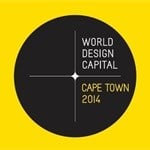The World Design Capital title may have moved on from Cape Town, as it travels to Taipei in 2016 but its influence remains in various legacy programmes that will enhance the creativity of Cape Town for years to come.
These are driven by the City of Cape Town, Western Cape Government, the city's four tertiary institutions, the Cape Craft & Design Institute (CCDI) and the Cape Town Design Network. It will also persist through the efforts and passion of thousands of people who were involved in the 460+ projects its followers and supporters.
Cape Town Design NPC CEO, Alayne Reesberg, says "World Design Capital marked an important point in Cape Town's design story. We will now build on the momentum that was started to grow the use of design in our city. Over the coming months WDC 2014's legacy activities will entail creating a framework to continue showcasing some of the projects as well as building on the design and innovation system."
Design plans and achievements
• The pitching sessions, which will now be run for designers and design businesses, as well as quarterly collaboration events to enable people to share ideas and build new working relationships.• Plans are afoot to create a platform to showcase the richness of design innovation in the region.
• A new monthly newsletter will also keep its pulse on the design movement in the Western Cape.
• The Inclusive Health Innovation Summit explored the application of design-led thinking for solutions to South Africa's healthcare system. The first of its kind in Africa, the Summit gave international and local innovators, experts and influencers the opportunity to discuss and debate what healthcare innovation means in an African context.
• The Western Cape Design Awards, which are set to become an annual feature on the local events calendar and part of the legacy for WDC 2014, was launched by the CCDI.
• The Cape Town's Future Foreshore exhibition that resulted from a partnership between the University of Cape Town and the City, sought to create new visions and possibilities for the Foreshore Precinct of Cape Town's central city.
• The Watershed is another proud legacy of WDC 2014, curated by design guru Trevyn McGowan who launched the Guild showcase in Cape Town a year ago in honour of Cape Town being named World Design Capital. McGowan's design prowess was a natural choice to curate the V&A Waterfront's new R50m development, which embodies urbanity in an innovative, light-filled space that is the perfect showcase for the craft and design tenants who now call it home.
• The Department of Design, a platform for design thinking, innovation and business, featured a programme of workshops, presentations, speakers and events that address sustainability challenges in South Africa. It was led by the government of Netherlands and represented a R4.5m investment in post-2014 co-operation.
• The Open Design festival, which was piloted in 2013, saw visitor numbers quadruple and was declared a resounding success. This annual cross-disciplinary citywide event created an educational, informative, inclusive and collaborative platform that galvanised Cape Town's creative communities and raised awareness of and an increased appreciation for design by all.
• The 7th SA Innovation Summit brought thought-leaders and experts in their fields together. The goal was to highlight priority areas that required new ideas and thinking, facilitating inventions, new processes and solutions. The organisers chose Cape Town to host the summit in honour of the WDC 2014 year and this represented a great opportunity for projects to collaborate and network with delegates.
• The Design, Development and Research (DDR) Conference offered participants a special opportunity to contribute to current thinking and questioning around design as a catalyst and strategy for social change.
• More than 5,000 people visited the 'Transforming Cities' Exhibition at the Cape Town Stadium. Installations, films, lectures and conventional exhibits from cities such as Bavaria, Paris, Dublin, Taipei, Accra, Qingdao, Seoul and Gwangju showed how design has had a positive impact on their citizens. The City of Cape Town, where design has been given a role in solving social, cultural, environmental and economic challenges, had its own digitally interactive exhibition that offered visitors different views and perspectives of the city on a giant floor exhibit. An integral part of the Exhibition was The Story of WDC 2014 which was an interactive journey for visitors, engaging through various components (live, digital, printed, 3D) to 'live and experience' the story of WDC 2014 in an interesting and extraordinary way.
• The "Make A Plan" Design Policy Conference, which was a first for South Africa, brought municipal, provincial and national government together with academics, designers and business to discuss the future of design and its role in economies, business, cities and developing countries.
• 'From African Earth; a celebration of Ceramics' was a salute to ceramics with a series of events that included exhibitions, workshops and festivals showcasing some of the finest handmade ceramics produced in our city, country and continent. The events also opened the design dialogue on the sustainability of the South African ceramicist as well as the growing and bolstering of the informal ceramics market.
• The WDC Pop-Up Shop provided a space for projects, designers, street foodies and other creative minds free of charge. It is now being managed by the CCDI for an experimental project aimed at designers and innovators, creative thinkers and businesses looking to grow and support local industries. Application to use the space is now open and the deadline for entries is 11 February.
There are still many projects that will be continuing through 2015 and beyond such as the Langa Township Arts Gallery Tour, Fabricate, Table Mountain Frames, the Guild exhibition and Open Design festival. Several international collaborations that were set up last year will also continue, including the successful Dutch collaboration.
"We will continue to expand on what World Design Capital started in 2014. The projects and collaborations that the designation catalysed will contribute towards creating a stronger, more cohesive design ecosystem," concludes Reesberg.
































